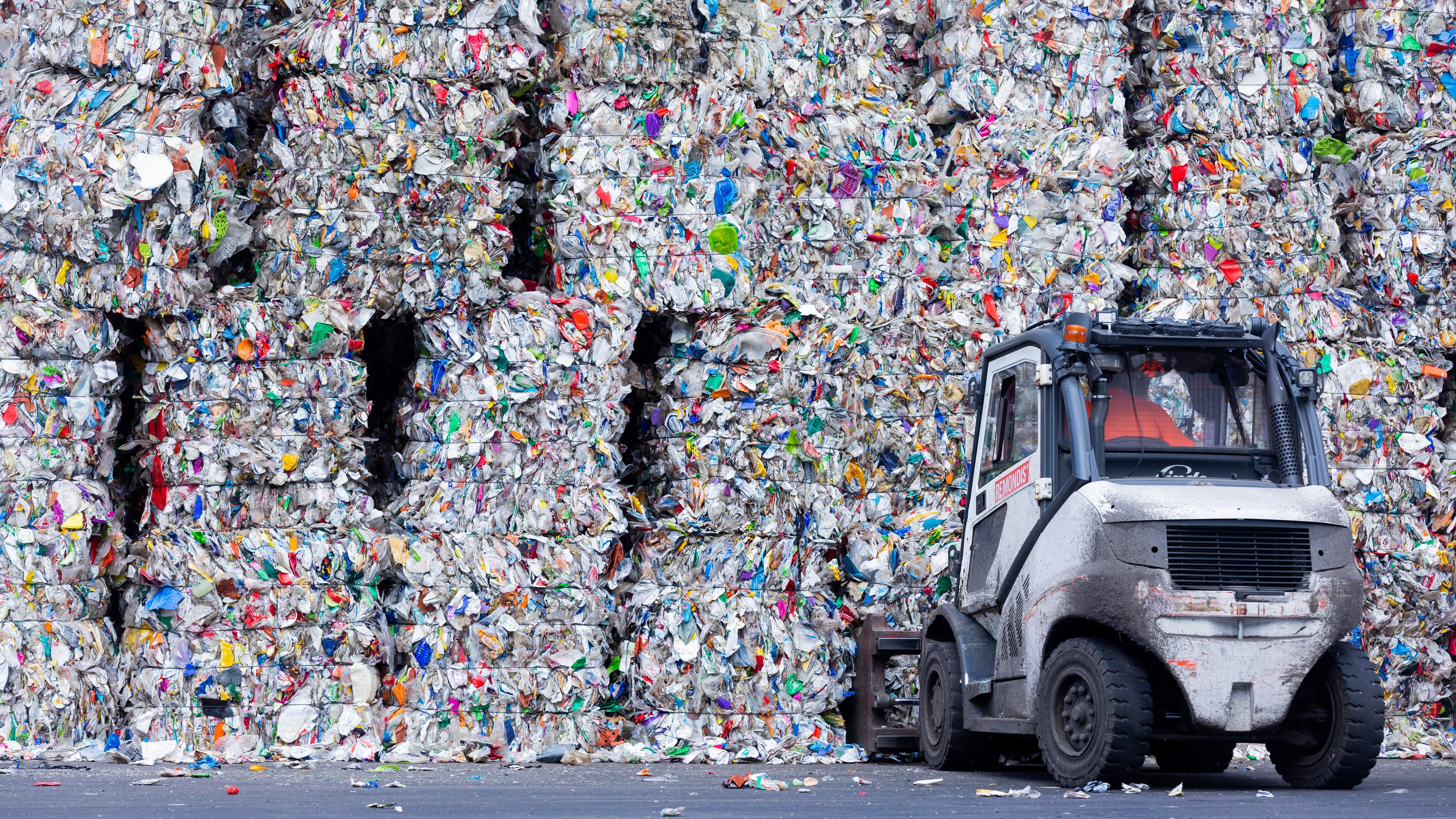Recycling rate for plastic remains globally low

Plastic production grows drastically, but less than ten percent is made of recycled material. In 2022, 400 million tons of plastic were produced worldwide, of which only 38 million tons came from the recycling, as a team led by Quanyin Tan from Tsinghua University in Beijing reports. It had analyzed the global fabric flows of plastic raw materials, products and waste and presented the results in the journal « Communications Earth & Environment ».
« The pollution from plastics is an urgent global problem that has significant ecological, economic and health challenges, » emphasize the study authors. Plastic can be found into the deep sea and in many animal stomachs, microplastics in drinking water, in the food and even in the blood of the people.
According to the study, 267.7 million tons of plastic waste were created worldwide. The amount of plastic waste landed on land is largest with 103 million tons. Around 90 million tons were burned and 30 million tons came into the environment for mismanagement.
Well collected and sorted – but also recycled?
According to the author, there were 74.8 million tons of plastic waste collected and sorted. However, 30.66 million tons came into an incineration plant – often for energy generation – and 6.25 million tons of a landfill. Only 38 million tons were really recycled. This corresponds to 14 percent of the plastic waste and 9.5 percent of plastic production from 2022.
Plastic production increased from two million tons in 1950 to 400 million tons in 2022, the team around TAN writes with reference to previous studies. For 2050, an increase is forecast to 800 million tons. In order to get a current picture of the situation, the researchers have compiled and analyzed data from national statistics, industry reports and international databases.
Luxembourg recycles too little
Plastic production needs coal, oil and gas
The raw materials of the 362 million tons of plastics, which were newly produced in 2022, are almost 98 percent oil, coal and natural gas. A non -usable loss of 13.4 million tons already arises in plastic production, another 4.24 million tons in the manufacture of plastic products.
Packaging was produced from more than 40 percent of the usable plastic (158.04 million tons). This was followed by structures (72.05 million tons), vehicles (32.02 million tons), electrical and electronic devices (28.02 million tons) and other areas.
A European consumes 85.6 kilos of plastic per year
According to the study, the USA followed the highest per capita consumption of plastics in 2022 with 216 kilograms followed by Japan with 129.1 kilos and the EU and Great Britain (EU28) with 85.6 kilos. The Middle East comes to 62.2 kilos, China at 56 kilos. India (15.5 kilos) and Africa (13.4 kilos) have the lowest per capita consumption.
In absolute numbers, China with 80 million tons is the region with the highest plastic consumption – 20 percent of world production. The United States follows 18 percent and the EU28 with 16 percent.
How to recycled in Luxembourg: Where is our trash going?
There are large regional differences when dealing with plastic waste. In the EU28, 29 percent of plastic waste landed in landfills, but 76 percent in the United States. The United States only led the recycling 5 percent of plastic waste, in the EU28 this quota was 14 percent. According to the study, the recycling rate is higher in China (23 percent) and in India (15 percent). In India, however, 43 percent of the plastic waste is lost through mismanagement. In Japan there is a lack of land for landfills, which is why 70 percent of the plastic waste is burned there.
Global no great increase in recycling
The study shows that the combustion, at 34 percent, is becoming an increasingly important method of plastic waste treatment, the study authors write. Although 40 percent of the plastic waste was still deposited in 2022, the researchers notice that this number was declining. The global recycling rate of 9.5 percent of the plastic produced is only a low improvement compared to previous years. The EU tries to contain plastic waste with various guidelines; A well -known episode are the fortified lids (« Tethered Caps ») for plastic bottles.




:format(webp)/s3/static.nrc.nl/images/gn4/stripped/data132134012-36b090.jpg)


